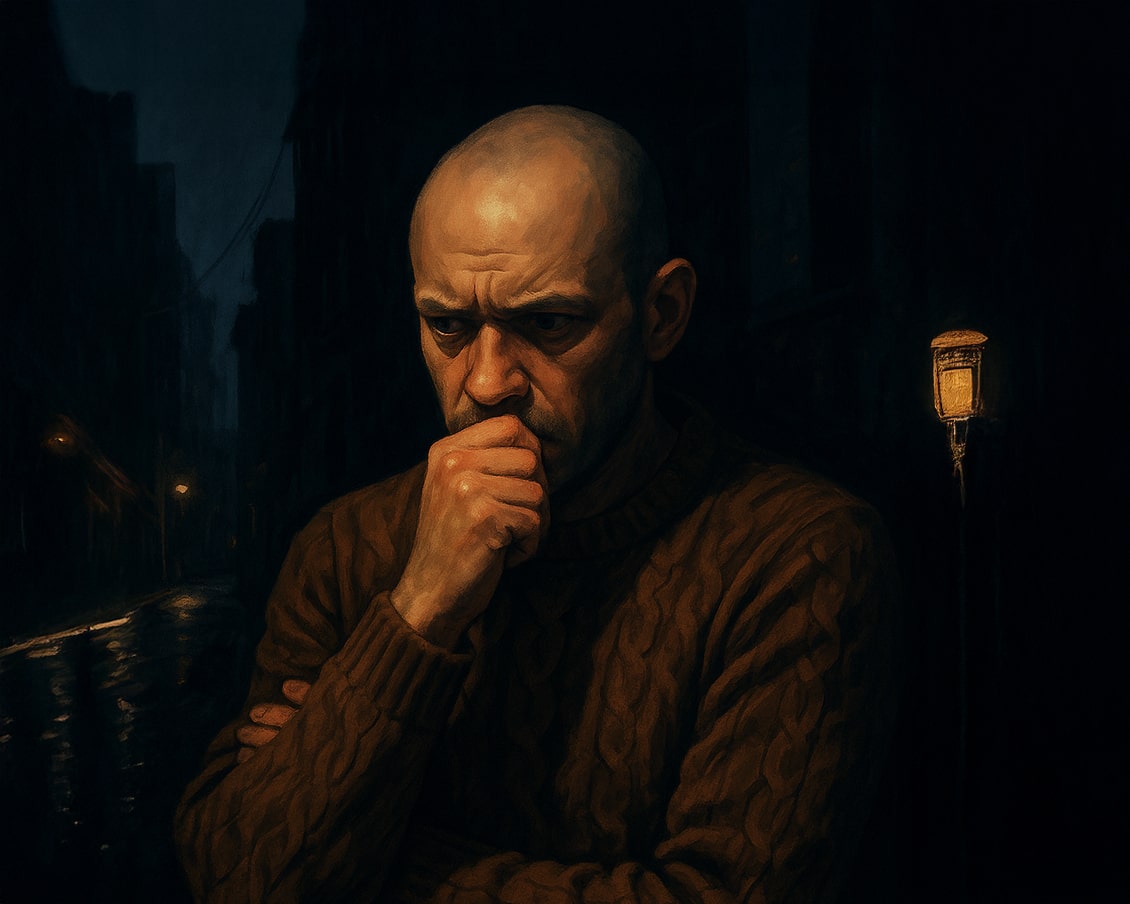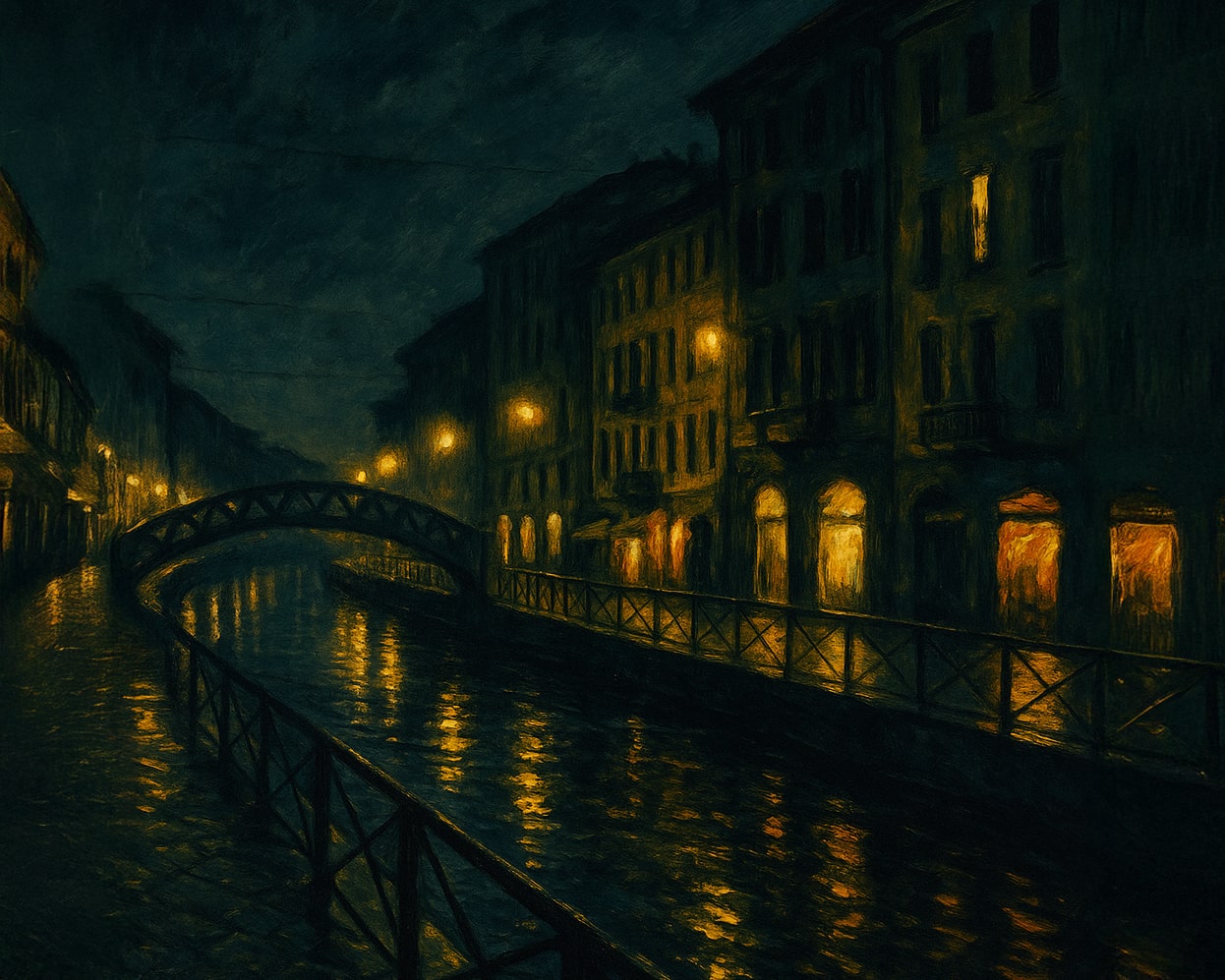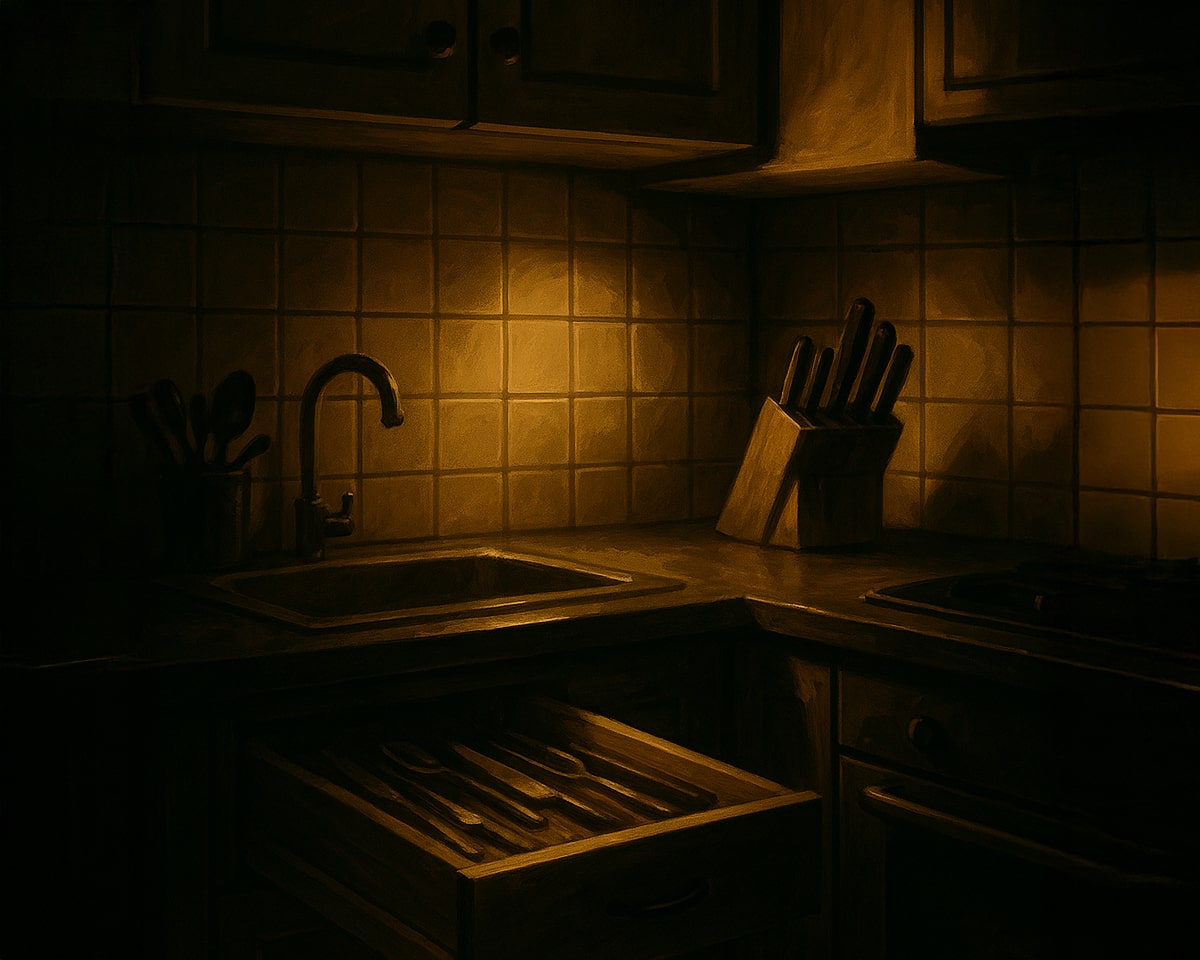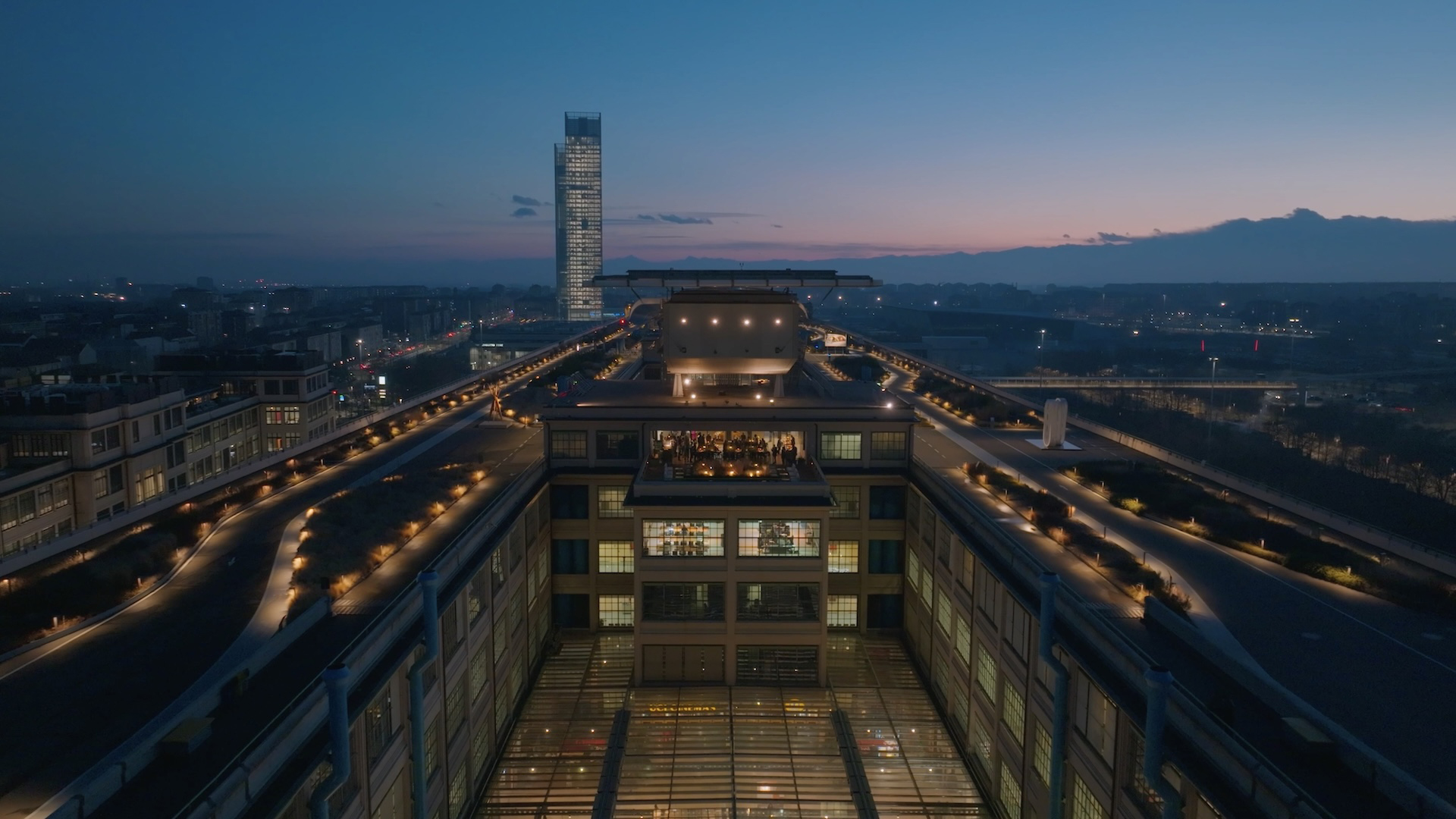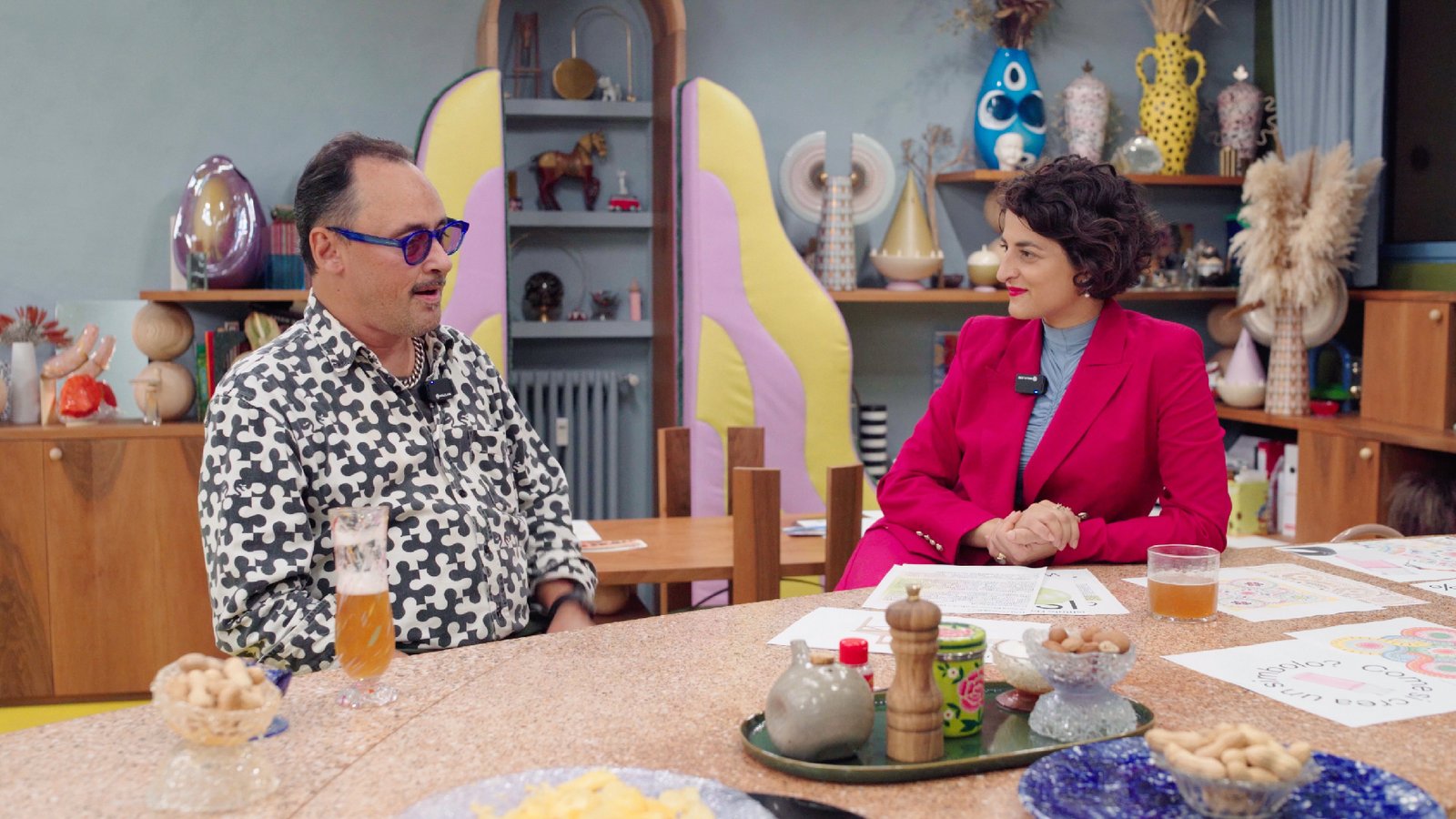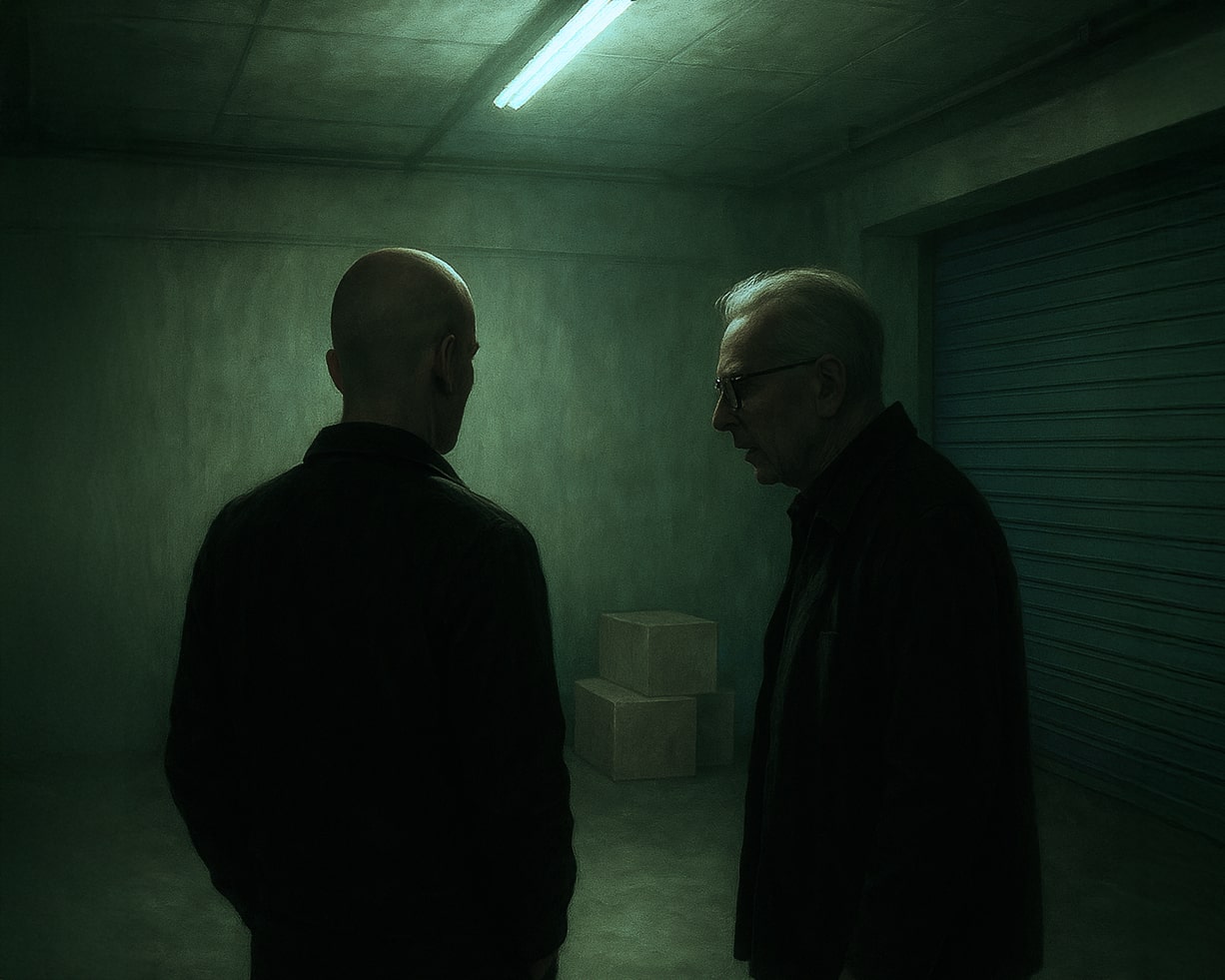
The murder of Giovanni Schubert
The story of the brutal murder committed by Matteo Chigorno that shook the city of Milan and the entire art world.
Milan, Italy. Morning of March 4th 2010. A man stands shirtless in his bathroom. He is drenched in sweat, staring into the mirror as if he no longer recognizes himself. His eyes are wide open, his face pale. He turns on the faucet and starts scrubbing his hands compulsively. He wants to erase what he’s done. Each stain of that liquid confirms the unbearable truth. The soap bar wears thin, but some marks resist — and may never disappear. That man is Matteo, and the blood on his skin is not his own.
The water turns a dirty orange and slips away down the drain. Into the darkness. Matteo, described by acquaintances as a strange and reserved person, was not seen as someone capable of such violence. Especially not toward his mother, who raised him alone with the values of Milan’s upper-middle class.
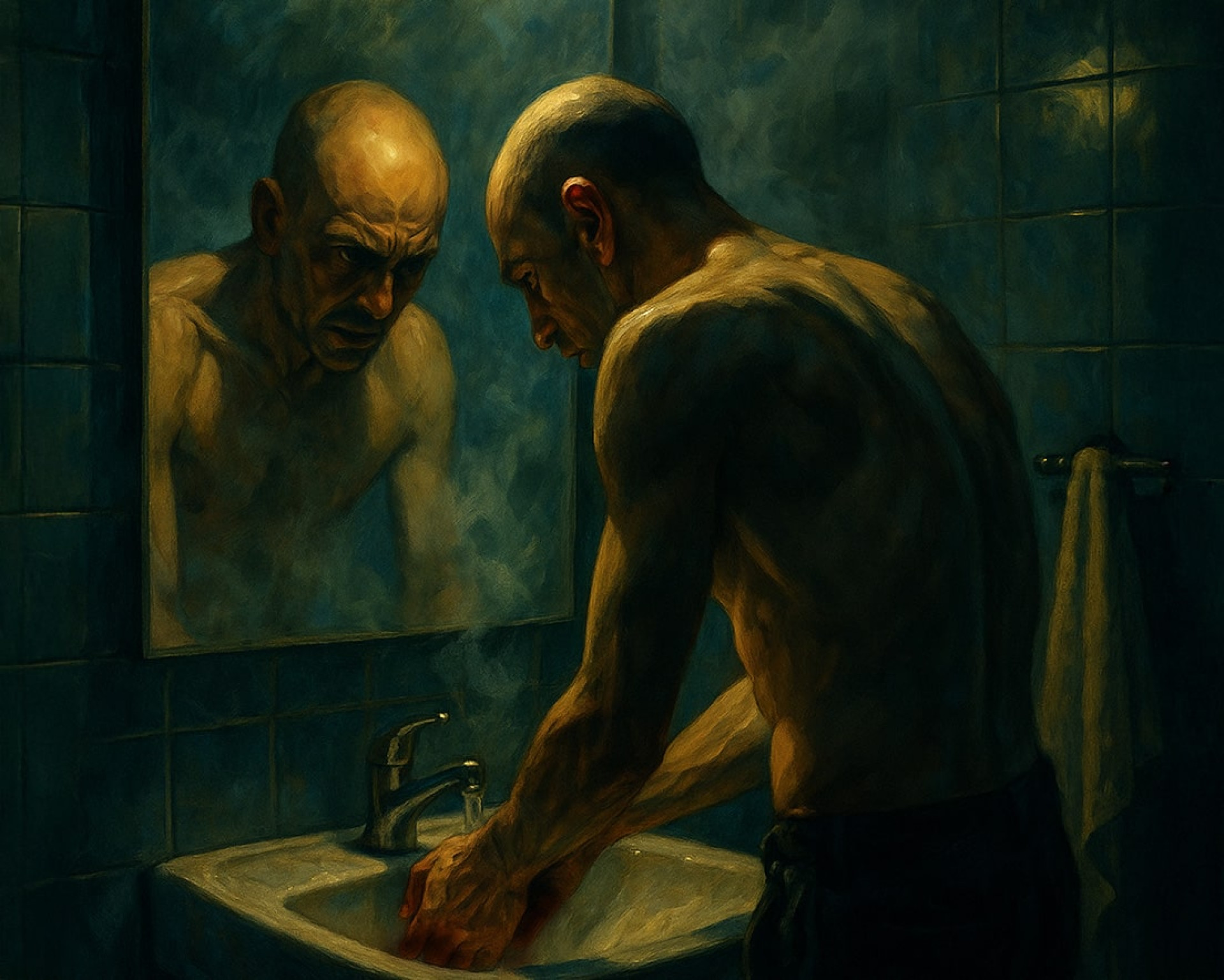 Matteo Chigorno's Portrait, created
Matteo Chigorno's Portrait, created
Matteo Chigorno was born in Milan into a well-off family with a long tradition of lawyers. An environment where respect is the rule—at least on the surface—but where each member is inevitably called to measure up to the successes of others. However, Matteo is still too young to perceive all this. For him, life seems simple: a child who never has to ask for much, growing up in a serene childhood full of games and opportunities. Everything seems to go smoothly until that tragic day.
Matteo is 12 years old when illness enters his life. His father is diagnosed with multiple sclerosis, a degenerative disease that irreversibly transforms the body. A fate difficult, perhaps impossible, to accept. That's what Matteo's father thinks too, deciding to end his life, choosing himself when to bring his existence to a close.
From that moment on, Matteo grows up with his mother, a figure who becomes his absolute point of reference. Despite the woman's love and dedication, the absence of his father remains an open wound, impossible to heal.
The time for high school arrives: the age of first dreams, of plans for the future. Matteo discovers a passion for photography and for journalism related to art and fashion. He begins writing his first articles, dedicating himself to what truly excites him.
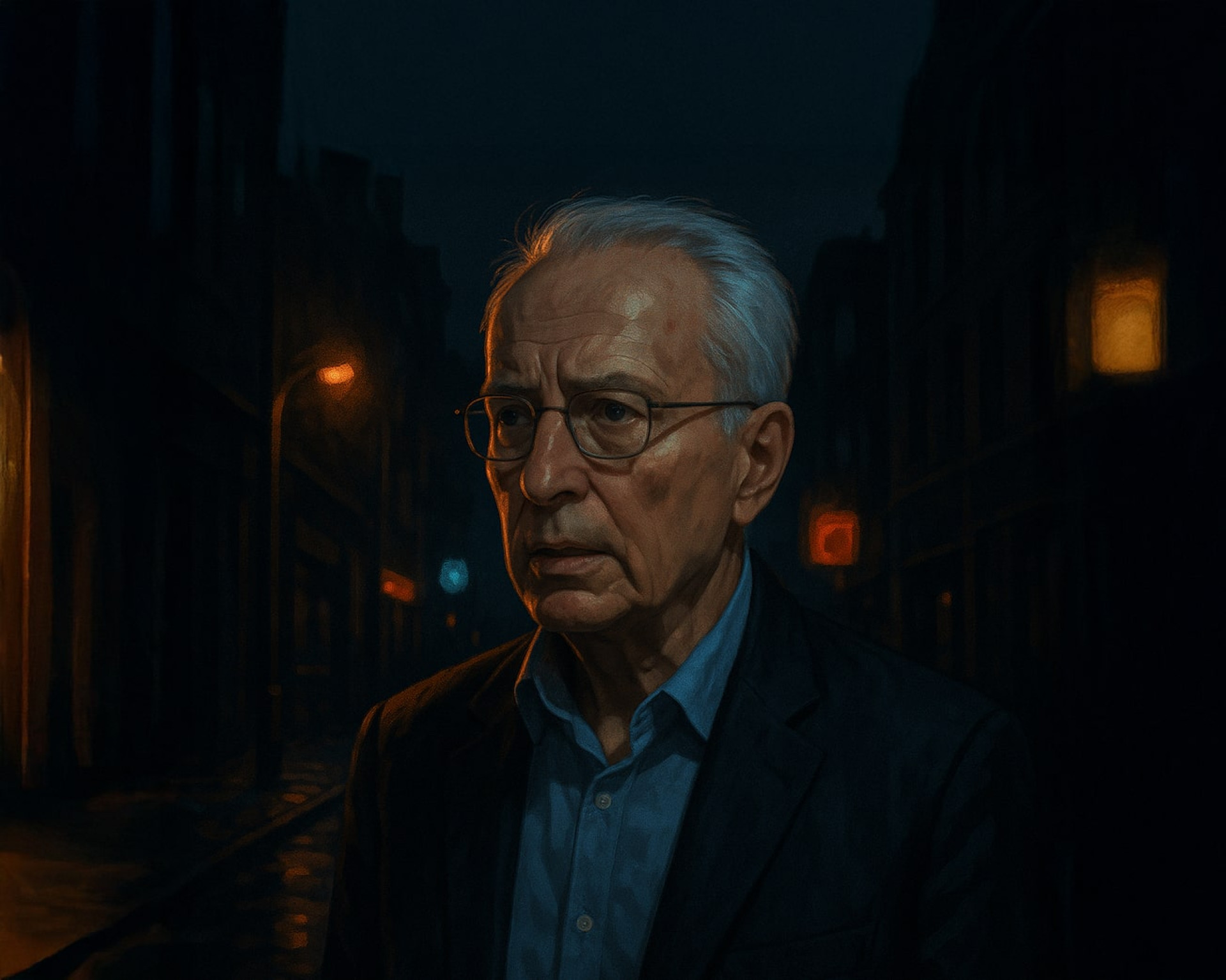 AI-generated portrait of Matteo Chigorno
AI-generated portrait of Matteo Chigorno
In 1999, he meets the man who will change everything: Giovanni Schubert, an art dealer and gallery owner. An immediate, almost inevitable bond forms. In that man, Matteo sees the father figure he has long missed. Thus begins a working relationship that will last over five years.
Schubert had founded the Arte Borgogna gallery in 1967 and, over the years, had worked with artists of the caliber of Lucio Fontana, Emilio Vedova, Mimmo Rotella, Martial Raysse, Riopelle, Asger Jorn, Wilfredo Lam, Luciano Fabro, Alighiero Boetti, Giulio Paolini, and Arman. The gallery was initially located at Via Borgogna 7 in Milan, later moving in 1989 to premises at Via Visconti di Modrone 20, just a few meters from the original location.
Matteo enters that world encouraged by Schubert himself, who places great trust in him and, over time, entrusts him with an increasing number of tasks. Giovanni Schubert is a brilliant man, with a strong sense of family and an excellent business acumen. He can recognize an artist's value before they become famous. The city of Milan also acknowledges his contribution, awarding him three Ambrogino d’Oro honors, reserved for those who have distinguished themselves through civic commitment.
In 2005, during an exhibition of Mario Schifano's works held at the Royal Palace of Caserta. During the exhibition, three works deemed fake are identified; they were allegedly included in the project to be subsequently authenticated as genuine by the Schifano Foundation itself. Roman dealers Giancarlo Iosimi and Daniele Iosimi are accused, along with Giovanni Schubert, involved as an external consultant.
All three are placed under house arrest, and for Schubert, the darkest period of his career begins. He is concerned about his business and the possibility that his gallery might be irreparably tainted by the scandal. He decides to take action, delegating Matteo to organize the artworks in various warehouses. Matteo seems up to the task and carries out the work diligently. However, suspicions begin to arise about some sales he personally manages.
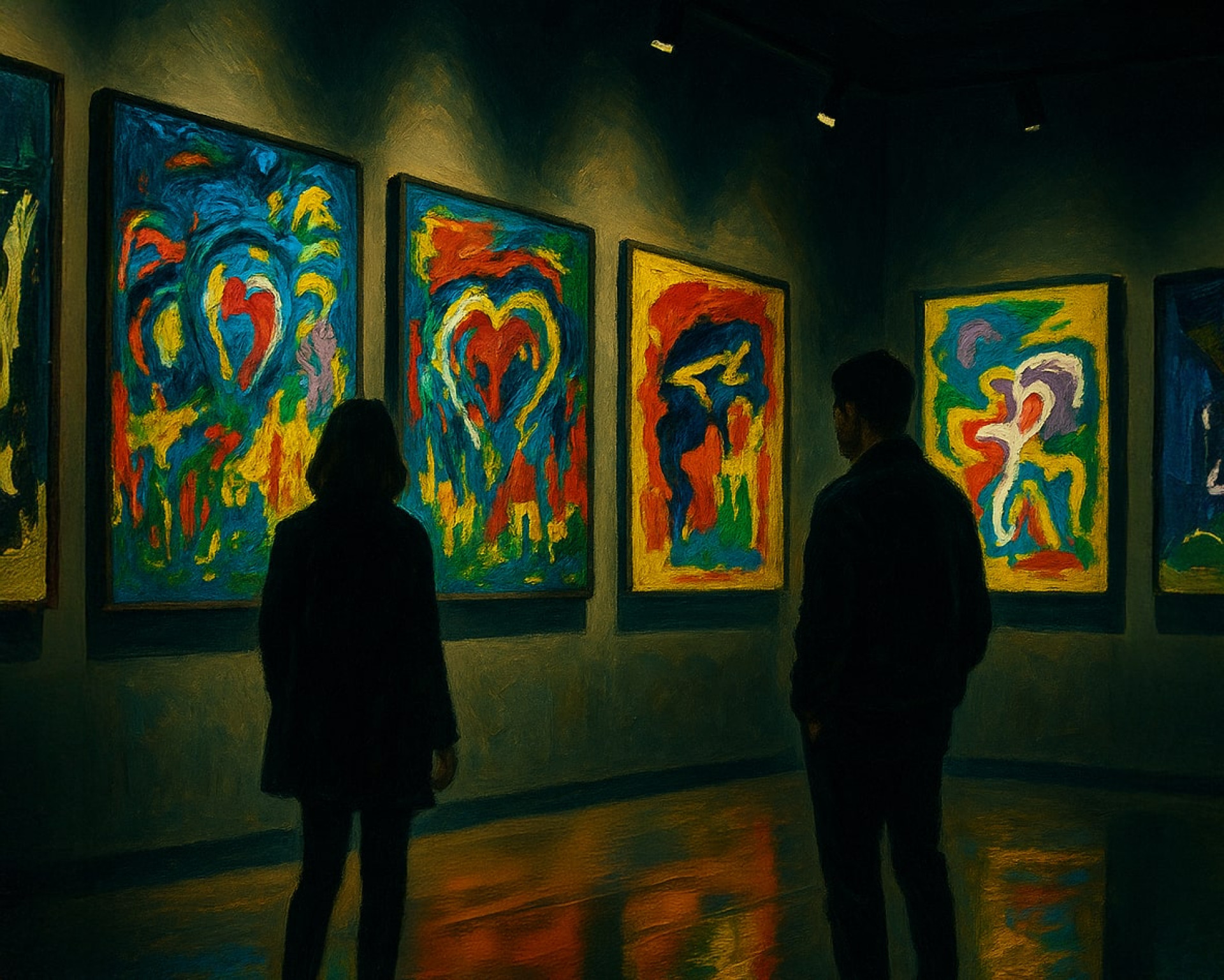 AI-generated image of an Art Gallery
AI-generated image of an Art Gallery
Giovanni wants to continue trusting him but starts to see him differently. Two years later, on October 12, 2007, Giovanni Schubert is fully acquitted: "for not having committed the act."
However, the relationship with Matteo never returns to what it once was. The assistant decides to leave the gallery—of which he had become director in the meantime—and to embark on an independent path.
In 2008, he opens "Arte2 Gallery" on Via Boltraffio, near the Central Station, specializing in street art. But business doesn't take off, and soon he is forced to close. He maintains a professional relationship with Schubert, continuing to buy and sell artworks for him, earning a commission.
It's the winter of 2010 when Giovanni Schubert contacts a Paris auction house he has collaborated with for years to sell some works. However, the auction house director informs him that those same works have already been sold by Matteo.
Schubert feels betrayed. The young man he had trusted, mentored, and supported had humiliated him in the worst way. The amount in question ranges between €35,000 and €70,000. Giovanni demands explanations: why did Matteo sell those works without the owner's knowledge? And why at a price below their actual value?
Initially, Matteo becomes unreachable. He doesn't answer calls, makes excuses, postpones. Until one day, he agrees to meet. He invites Giovanni to his home in the late afternoon of March 3, 2010. He lives on Via Donna Prassede, in the southern outskirts of Milan. At 7:00 PM, Schubert crosses the threshold of the residence. An intense argument ensues immediately. Giovanni accuses, demands clarifications, threatens to tell Matteo's family everything and publicly humiliate him. Tension rises, words become increasingly violent.
The argument continues in the garage, where other works managed by Matteo on Schubert's behalf were supposed to be stored. But something snaps. The situation escalates. Matteo loses control: he pushes Giovanni, who falls heavily to the ground, hitting his head. Seeing the elderly gallery owner motionless, in a sort of delirium, Matteo continues to strike him. He massacres him.
The garage becomes a blood-soaked scene. Schubert's body lies on the floor. Matteo tries to lift him to carry him away but fails. The weight, the shock, the adrenaline beginning to fade—all mix together. In a panic, he makes a chilling decision: to dismember the body. "In that madness, there was only the idea of getting rid of that body. As if taking it away would be enough to return to the life before" he would say years later.
He goes up to the kitchen, grabs knives, plastic bags and a suitcase. Returns to the garage and begins to dismember the corpse. When he's done, he loads everything into the car.
He drives along the Naviglio, where he throws the black bags. He continues to wander through the night, searching for a place to dispose of the suitcase. He finally finds a farmhouse and gets rid of the last remnants of that horror.
As if nothing happened, Matteo returns home and begins to clean up every trace.
Meanwhile, the first phone calls begin to come in. It’s Giovanni Schubert’s daughter—she’s worried. Her father hasn’t returned home after meeting with Matteo. Matteo is nervous, but sticks to his story: he claims he said goodbye to Schubert around 9:00 p.m. But Costanza is not convinced.
Together with her husband, she decides to go to Matteo’s home in person. There’s no trace of her father. So she insists: she wants to see the storage unit where, according to Matteo, some artworks were being kept.
Matteo takes her to a garage, but it’s not the one where the murder took place. It’s his second garage, located very close to the first one. Costanza starts looking around. On the floor, she notices a strange mark, as if some kind of liquid had been hastily cleaned up. That’s when she snaps and yells, “That’s my father’s blood!” She has no proof—only a fierce instinct. But in that moment, it’s enough.
Tuttavia, in quel garage non ci sono elementi evidenti che possano incastrare Matteo. Almeno, non subito.
Still, there is nothing in that garage that clearly implicates Matteo. At least, not yet.
At 5:05 a.m. on March 4, 2010, Costanza’s husband calls the Milan Carabinieri’s operations center to report his father-in-law’s disappearance. The case is taken over by the Mobile Squad, led by Alessandro Giuliano. Just a few hours later, investigators arrive at Matteo Chigorno’s door. He denies everything, sticking to his version of events. But the police don’t believe him. He is taken to the station.
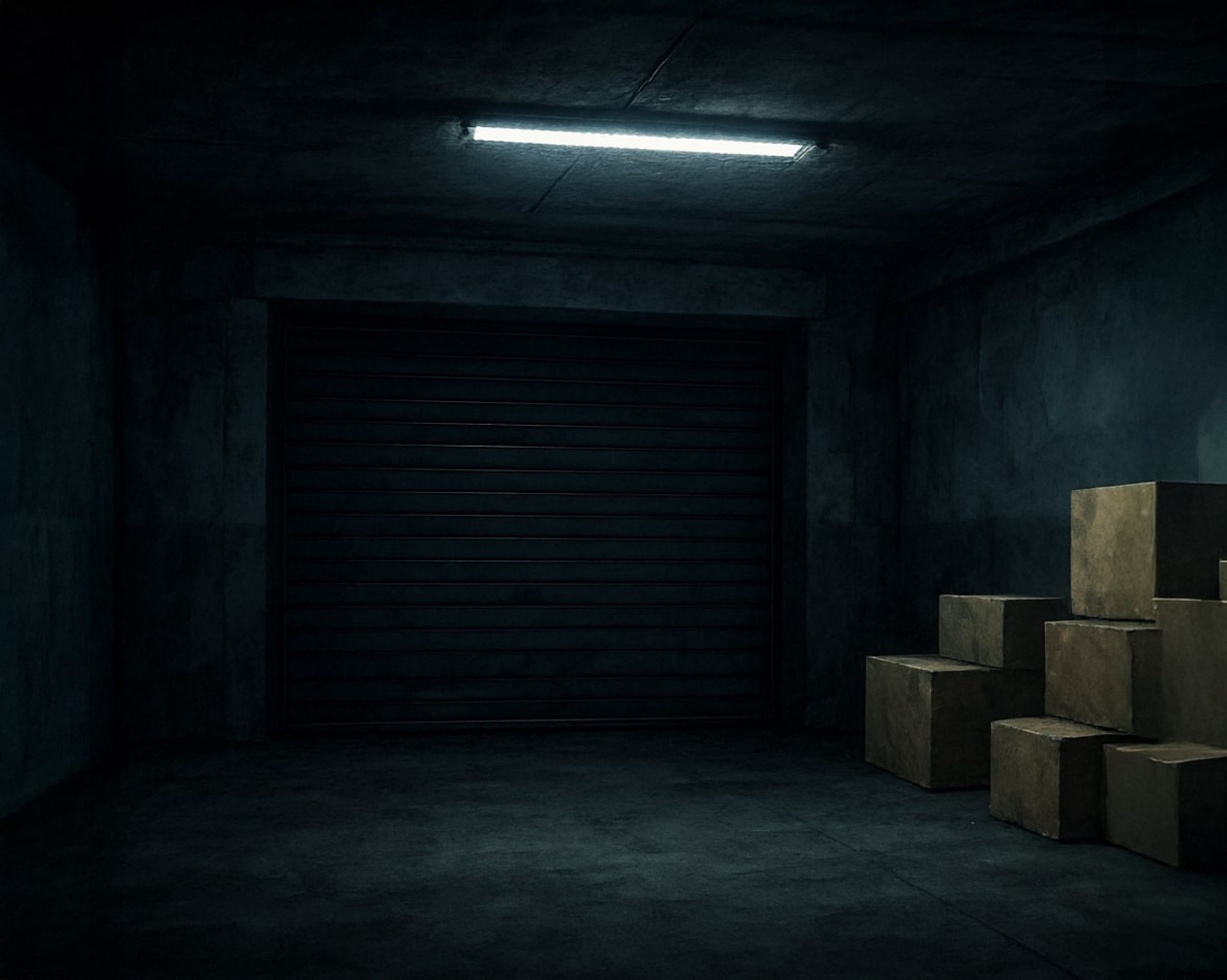 Matteo Chigorno's Garage, image created with artificial intelligence
Matteo Chigorno's Garage, image created with artificial intelligence
The investigation begins. A thorough inspection of the house and garage reveals the truth: blood traces are found in multiple places, including inside the washing machine. In a nearby trash bin, investigators also find the victim’s cell phone—covered in blood.
Faced with the evidence, Matteo breaks down. He confesses everything. He tells every detail and indicates the places where he abandoned the remains of the body. The case is closed.
He is sentenced to life in prison, to be served at the Bollate correctional facility. But after thirteen years, Matteo is granted permission to work outside the prison, employed as a laborer in a factory.
In a recent statement, he said:
“I will never be able to make up for what I’ve done. How do you apologize to a family for such horrific actions? I’ve tried, but I never truly had the courage to do it. And besides... there’s nothing I could say that would make them feel better.”
Despite the killer’s detailed confession, Giovanni Schubert’s daughter, Costanza, still has doubts.
According to her, it wasn’t just about the illegal sale of three artworks. Many more works disappeared from her father’s storage facilities, and Matteo Ghigorno, on his own, could never have made them vanish nor orchestrated such a ruthless plan without help.
It’s a belief she has tried to bring to the attention of investigators—but no one has ever listened.
For the prosecution, that theory was never considered credible.The case remains officially closed with the final conviction of Matteo Ghigorno.
What is certain, however, is that with Schubert’s death, Milan lost a key figure in its cultural scene. A refined, discreet man, capable of interpreting the complex dynamics of contemporary art with intuition and expertise. A careful collector, a true enthusiast, a representative of that Milanese bourgeoisie that had the vision to invest in culture.
A rare talent who could recognize—before anyone else—the artists destined to become masters.
Cover image: AI-generated portrait of Giovanni Schubert and Matteo Chigorno.
Alessio Vigni, born in 1994. He designs, edits, writes and deals with contemporary art and culture.
He collaborates with important museums, art fairs and artistic organisations. As an independent curator, he works mainly with emerging artists. He recently curated “Warm waters” (Rome, 2025), “SNITCH Vol.2” (Verona, 2024) and the exhibition “Empathic Dialogues” (Milan, 2024). His curatorial practice explores the relationship between the human body and the social relationships of contemporary man.
He writes for several specialised magazines and is author of art catalogues and podcasts. For Psicografici Editore he is co-author of SNITCH. Dentro la trappola (Rome, 2023). Since 2024 he has been a member of the Advisory Board of (un)fair.
